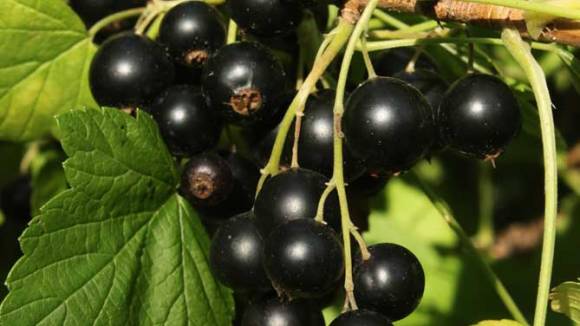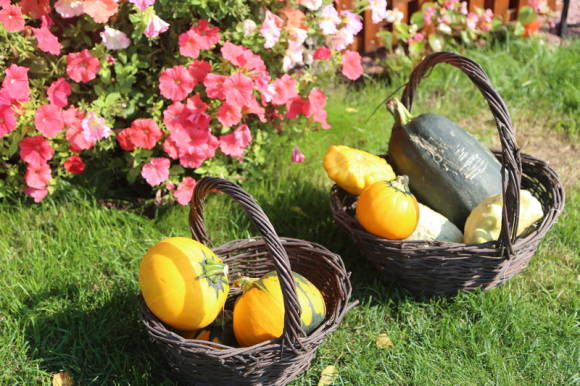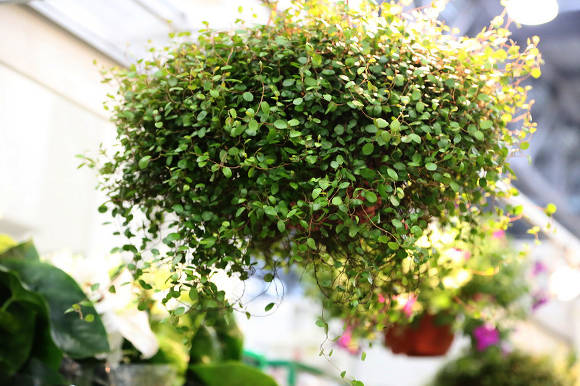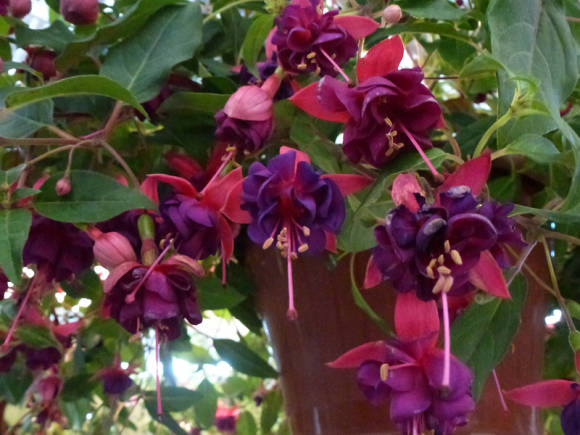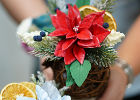Welcome to the wonderful world of intersectional hybrids of peonies, peonies of the new millennium, more often called Ito hybrids.
I began my previous article about the novelties of herbaceous peonies with the words: "If there is a flower to which" praise is sung, "it is undoubtedly the" Queen of flowers "and" Flower of flowers "- a peony." He has a well-deserved reputation. It has been loved since antiquity not only for the outstanding beauty of a large flower of magnificent colors, elegant appearance, various shapes, but also because it is considered a symbol of friendship, happiness, love, luck and peace. In addition, the plant has a lot of varieties.
Now you will understand the words of Valerie Easton about intersectional hybrids: “They show beauty and strength, they got the best qualities of their parents - herbaceous and shrub peonies. The colors of the flower are amazing: from watercolor pink to orange, copper, dark red and pure yellow. A single flower is itself equal to a flower arrangement. But the real miracle is that they form more than one bud per stem. This means you get at least a month of flowering as the flowers open one by one. Each adult peony produces an amazing amount - from 30 to 50 flowers per season ”. Such is the "praise being sung" to the new line of peonies.
Their selection began in the last century. Many then dreamed of creating yellow large-flowered, easy-to-cultivate herbaceous peonies by transferring the outstanding qualities of yellow-flowered shrub peonies to herbaceous ones. But due to genetic barriers between tree and herbaceous peonies, the crosses were negative. However, unattainable at first glance, the goal was achieved. The first examples of these incredible peonies, which have now produced a wide range of luxurious colors, are now nearly 50 years old. This keen Japanese amateur gardener Toichi Ito managed to cross the Lemoine hybrid tree peony (Paeonia x lemoinei) with white-flowered peony milk-flowered (Paeonia lactiflora) ‘Kakoden’, using the latter as the seed parent. Before I continue with Ito's success story, readers should know that there are 3 yellow-flowered herbaceous peonies mentioned in the literature.
1. Peony Mlokosevich (Paeonia mlokosewitschii) was the first of the yellow-flowered herbaceous peonies, discovered in 1897 by the Polish botanist Ludwik Mlokosevich near Lagodekhi, a town in the Caucasus, and named by Alexander Lomakin in honor of the discoverer. Since the name Mlokosevich is difficult to pronounce for non-Poles, he has a playful nickname "Molly the Witch". It comes from Azerbaijan, Georgia and Dagestan. It is a perennial 60–70 cm tall. A rare and rarely offered species with solitary lemon-yellow flowers that propagates by seed. Experts say that seedlings can only be expected from blue colored seeds. The best sowing time is September. Germination takes up to 2 years.

2. Paeonia ‘Huang Jin Lun’ (‘Golden Wheel’. Synonyms: ‘Aurea’; ‘Minuet’; ‘Goldmine’; ‘Oriental Gold’; ‘Yokihi’). It is one of the finest, colorfast, yellow herbaceous peonies in China and is a very good cultivar for cutting. The blooming Huang Jin Lun was discovered during the Japanese occupation of northeastern China in the 1930s in a garden at the palace of the last emperor in Changchun, Manchuria. It was brought to Japan and introduced into a culture called 'Yokihi'. Crown-shaped, with a flower size of 15x9 cm, with strong straight stems, 90 cm high. This is a rare, unique variety. It is the pinnacle of the merits of the peony flower in the understanding of the Chinese. Everything in this plant is yellow. The leaves are yellowish green, the buds and rhizomes are yellow. Therefore, the variety is easy to identify. The Chinese claim that the ‘Golden Wheel’ is the only truly yellow peony in the lacto-flowering group. Outside of China, some botanists question whether 'Huang Jin Lun' is really a milk-flowering plant. They believe that, given its characteristics, it is a new species.However, Karsten Buchhart, a renowned connoisseur of the genus, claims with 1000% certainty that the ‘Golden Wheel’ is a milk-flowered peony, albeit an unusual one. By roundabout and mysterious ways, he finally got to the United States in 1954, where he was registered by Louis Smirnov as ‘Oriental Gold’. Since then, ‘Huang Jin Lun’ has been widespread, but is still considered a collector's item.
3. Daurian peony (Paeonia daurica). During a trip to Iran, the famous plant researcher from Latvia, Janis Rukshans, discovered a peony with flowers of an incredibly bright yellow color, which he had previously seen only in Ito hybrids. Janis claims that the species he found on the mountain slopes is low, compact, herbaceous with large bright yellow flowers. But in the opinion of Janis, this is definitely not Mlokosevich's peony, whose yellow tint is only slightly noticeable, unlike the handsome man from Iran. Until now, the question remains whether Janis found a new species or one of those already described. He himself is not sure and says: "I am not so versed in peonies, but it may be a subspecies of some kind, in any case, his seeds were offered by the late Jim Archibald, a famous seed collector who visited Iran many times." We have done some research and believe that it is a Daurian peony, which according to the Botanical Journal of the Linnean Society (2003) is subdivided into 5 subspecies: ssp. coriifolia; wittmanniana; mlokosewitchii; macrophylla and tomentosa.
What are intersectional peony hybrids?
Initially, intersectional hybrids were obtained by crossing herbaceous garden peonies with tree peonies to create yellow herbaceous peonies. They, like grassy ones, die off in winter. Intersectional hybrids combine the following best qualities of herbaceous and woody peonies:
- very large flowers of colors previously unknown in herbaceous peonies;
- healthy foliage, similar to the foliage of treelike peonies;
- a powerful, bushy, aboveground part that does not require a garter, dying off for the winter;
- strong herbaceous stems that stand right even after showers, therefore they are more suitable as landscape plants than herbaceous peonies;
- a longer flowering period due to flowers that appear on the side shoots;
- high winter hardiness, like herbaceous peonies, but at the same time more vigorous growth.
Precursors of intersectional hybrids
The history of intersectional peonies is long, and it began in the last century (1900 - 1935), when two Frenchmen - Victor Lemoine and Louis Henry - were the first to create yellow peonies for the garden by successfully crossing a wild tree yellow peony (P. lutea) with large-flowered tree peonies (P. suffruticosa). The result was a group of wonderful garden plants known today as lutea hybrids. Although at the time they were an achievement in themselves, their significance for the peony world was not yet quite clear, as they were to become the basis for further achievements.
This work was continued and expanded by the great American breeder Dr. A.P. Saunders, who created and registered 75 lutea hybrids in the 1940s and 1950s. Again, this man, who has done so much for the world of peonies, had 2 unnamed and unregistered F2 hybrids, which he passed on to breeder Nassos Daphnis and to William Gratwick's nursery (New York). Daphnis understood the significance of these strange plants and used the ugly but fertile F2 hybrids in numerous crosses with the F1 hybrids as well as the finest Japanese tree peonies. Thus, he received a new set of recurrent lutea hybrids, some of which were restored to fertility. Dr. David Reeth, in turn, used some of the fertile Daphnis hybrids to create several highly fertile lutea hybrids, such as the 'Golden Era', which has gained prominence in peony hybridizer circles. Although Dr. Riet has also produced numerous outstanding yellow tree peonies and herbaceous hybrids like 'Alice in Wonderland' and 'Lemon Chiffon', his greatest contribution was the less impressive but highly fertile 'Golden Era', thanks to its foundational role on the long journey. creation of intersectional hybrids.Fortunately, Reet recognized the importance of his new seedlings to other breeders and distributed them (like the unnamed A-198 and 199 seedlings) for breeding use. As a result, hybrids such as the A-199 have been widely used by Roger Anderson, Don Smith, Irene Tolomeo and others, creating hundreds of exciting new intersectional hybrids. This end result would not have been possible without the crucial first step of Lemoine and Henry and any of the intermediate steps taken by Saunders, Daphnis, and Rith along the way. This story highlights Ito's extraordinary achievement, who succeeded in cross-breeding, even though he only had relatively non-fertile F1 lutea hybrids to work with, like Lemoine's 'Alice Harding'.
 |  |
Breeders
Toichi Ito. In the past 40+ years, many have tried to breed the intersectional peony and most have not done very well. I will dwell on the most successful breeders. In addition to Toichi Ito, these are 3 more Americans - Roger Anderson, Irene Tolomeo and Don Smith.
 |  |  |
But the first breeder who succeeded in crossing herbaceous peonies with tree peonies was Toichi Ito, a leading Japanese breeder, who conceived the idea of creating a peony with a pure yellow flower. It is known that Ito performed 12,000 crosses until he finally obtained a positive result of 36 seedlings. It is assumed that Ito could have started this work in 1948. It is known that he died in 1956, obviously not seeing the fruits of his labor, and the work was continued by his assistant Shigao-Oshida. It was reported that the first plants from these crosses began to bloom around 1964, but this is not certain and could have happened earlier. In any case, out of 36 seedlings, 6 were recognized as outstanding, and these were the first herbaceous peonies with bright yellow double flowers.
Late 1960s American gardener Louis Smirnov visited Japan and received permission from Ito's widow to reproduce, distribute and patents for 4 of these plants. Smirnov called them ‘Yellow Crown’, ‘Yellow Dream’, ‘Yellow Emperor’ and ‘Yellow Heaven’. The vigorous plants had attractive foliage like the tree parent, while at the same time retaining the herbaceous nature and increased winter hardiness of the herbaceous parent. Their appearance caused a flurry of further attempts at hybridization. At the same time it was revealed that Ito also crossed the pink-flowered tree peony 'Kaguri-jishi' with the herbaceous 'Kakoden', which led to the appearance of two pink herbaceous peonies: 'Pink Heaven' and 'Pink Purity'. Unfortunately, these two cultivars were accidentally destroyed, but Don Smith later succeeded in creating a pink-flowered intersectional peony from a cross of a similar type. But more about this story.
Irene Tolomeo (1925 - 2011). This is a serious amateur peony hybridizer from the Northern California grape region. She devoted the last 20 years of her life to peonies. Don Smith says: "Irene's contribution is not well known outside of the peony community in the United States, but she has produced a number of excellent intersectional hybrids, of which 12 are named and registered with the American Peony Society." Some of them are on sale and are serially named 'Sonoma', after the area where she lived. Its first registered variety is 'Sonoma Sun' (1996) and the last 'Sonoma Yedo' (2010).
 |  |
Roger Anderson. Undoubtedly, it is the leading hybridizer of intersectional peonies. In 1978 Roger and his wife Sandra founded a peony garden - Callie's Beaux Jardins, with an area of about 4 hectares. Growing peonies, especially intersectional ones, was and remains Roger's passion. He says about his hobby: “As a child, peonies were my weakness, my grandmother's favorites and, although I liked different flowers, they were the first number. In 1972, when I was 34, I joined the American Peony Society and became interested in breeding. Everyone was busy looking for a nice yellow herbaceous peony. I tried to do the same. "
 |  |
Roger read many books on plant breeding and performed many different crosses, but with little success. Finally, in 1980, he discovered a lactoflower peony plant that took in tree pollen, and Roger's success story began.Its most famous cross-sectional hybrid is the yellow 'Bartzella', which bloomed in 1986 and has since spread around the world. Peony experts often refer to it as the world's most perfect yellow peony. Since 1980, Roger has bloomed about 600 hybrids, of which only a small percentage are registered.
 |  |

Today Roger continues to experiment with colors and varieties of intersectional peonies. He says, "I'm 74, but I'm still breeding the best." Roger performs over 1000 crosses a year in the hopes of producing the first F2 cross-section hybrid capable of producing seed for propagation. “My greatest joy in growing peonies is looking at the seedlings in the spring,” he says.
Roger and his wife donated 55 of their internationally acclaimed intersectional peonies to the living collection of the Hoard Historical Museum in Fort Atkinson, Wisconsin, where they lived for a long time. The museum takes great pride in not only providing space for displaying Roger's exceptional peonies, but also preserving the peony heritage as a living collection. The list of the most popular varieties of Roger besides' Bartzella 'includes' Callies Memory', 'Cora Louise', 'First Arrival', 'Hillary', 'Julia Rose', 'Lemon Dream' 'Morning Lilac', 'Pastel Splendor', ' Unique ',' Scarlet Heaven, 'Sunshine Sensation'.
 |  |
Don Smith. He is one of the world-famous breeders engaged in the breeding of intersectional hybrids. When Don graduated in 1966 from Fairleigh Dickinson University in Tineck (USA) with a physics degree, no one imagined that he would become a leading breeder. For 37 years, he pursued a career as a research physicist at the Air Force Laboratory in Bedford, USA, where his achievements as a scientist were quite impressive. In addition, having authored numerous scientific papers in infrared and atmospheric physics, Don became Program Manager and Science Director of the first (non-NASA) science experiment to fly the American space shuttle.
 |  |

Since the early 1990s, Don has taken up crossbreeding as a hobby, inspired by the outstanding achievements of Toichi Ito and the successes of R. Anderson. He soon got caught, became editor of Paeonia magazine in 1995 and began writing about intersection crosses and hybrids. Having completed his main work, Don devoted all his time to creating new and improving intersectional hybrids.
After 20 years of breeding, Don now has over 250 intersectional seedlings. The first of them bloomed in the spring of 2000. Now 29 have already been named and registered by the American Peony Society. Among them - the unique cross-section hybrid from the backcrossing ‘Reverse Magic’ and the wonderful huge double pink ‘Impossible Dream’ - the only known hybrid between herbaceous peony lacto-flowering and peony tree-like (P. sufruticosa). Don currently maintains several outstanding educational websites on intersectional peonies and is considered one of the world's leading experts. In May 2011, Don was awarded the American Peony Society's Sounder Medal.
 |  |
 |  |
 |  |  |
A pipe dream
In the world of peony, a pipe dream has long been called a hybrid between a herbaceous and tree-like peony. Both amateurs and professionals dreamed of creating the perfect peony by combining the best qualities of their favorite peonies. The conventional wisdom about genetic barriers between treelike and herbaceous peonies, which hindered attempts at crossing, turned out to be wrong! Toichi Ito, who successfully crossed the 'Kaguri Jishia' pink tree peony and the 'Kakoden' white herbaceous peony, produced several large pink double peony varieties. Two of them were named by Louis Smirnov ‘Pink Symphony’ and ‘Pink Harmony’; they were reported to grow in his garden on Long Island. Then it became known that the varieties were accidentally destroyed, and they, too, seemed a pipe dream. Since none of the breeders had seen these two pink varieties, many were skeptical about the fact of their existence. Others, however, hoped that these hybrids could be quickly re-created, and many such attempts have been made. Time passed, and new hybrids of this type did not appear, and hope began to fade.Many hybridizers simply gave up, deciding that this particular cross was really a pipe dream. Be that as it may, in 2003 Don Smith announced an outstanding breeding milestone - the birth of a new intersectional hybrid: “Now, 35 years after Smirnov's announcement, it will be my great joy and privilege to announce that the search for a pipe dream is finally over. In June 2011, an outstanding new 2003 cross-sectional peony hybrid bloomed for the first time in my garden. This plant comes from a cross (Smirnov) of a white semi-double tree-like Japanese peony 'Stolen Heaven' (Smirnov) and a pink simple herbaceous milky-flowered variety known as 'Martha W'. I have waited 6 long years for this plant to bloom and am happy to report that the bloom was worth the wait.
 |  |  |
For four weeks I admired ten large buds sitting on the tops of tall and straight stems, and wondered what would come of them. Will they look like beautiful flowers from a photograph published in Smirnov's catalog 35 years ago, or will they bring another cruel disappointment. Most likely, the flowers will be simple, with good petals, and I will have to wait another year to see if they become double in the second bloom, as is the case with many intersectional hybrids. As the buds grew, it became abundantly clear that whatever the flowers were, they would be very large. But will they be terry and beautiful? The days passed slowly, and my excitement and anticipation grew. Then, when I approached the garden on June 11, 2011, it became clear from afar that today I will finally receive an answer. From more than 100 feet away, I saw huge pink flowers swaying proudly in the cool breeze. I ran because the wait was almost unbearable. When I was in the garden, from a distance of several feet, I joyfully realized that my dream had come true. The answer to both questions was a thundering "yeah"!
The flowers were not just beautiful, but gorgeous! In fact, they exceeded all my expectations. Very large, very pink and very pretty. Undoubtedly, it was the largest and most beautiful pink cross-section hybrid I have ever seen.
I enjoyed the moment for a few minutes. I thought about the first time I saw my son and my daughter. I thought what a blessing and fortune it was that I succeeded where many have failed. Then I thought that I was the first and only person in the world to see this beautiful new creation. It was then that I realized that highlights like this are the magic and seduction of hybridization. For this moment, we spend so many hours in the garden and in the house, working with pollen, seeds and plants, only to see the first bloom after years of waiting. This hope that we can create something really beautiful and for years to come gives us patience and perseverance to keep trying again and again. "
So what is the future of these fantastic plants, intersectional peony hybrids?
Their color palette is likely to expand, from pure white to exotic mixed and bi-colored. We also expect to see lush foliage, the ability to re-bloom in the fall, fully fertile plants, which will make breeding less difficult. And, importantly, as they become more famous and they are intensively propagated, the price for them will definitely decrease and these peonies of the future will become available to gardeners all over the world.
Don Smith is one of the breeders trying to achieve these goals. However, Don says about his success: "I would not have reached such heights as now, if I had not stood on the shoulders of many others who came before me."
My sincere thanks go to Don Smith, who, by providing me with a wealth of information, made it possible to write this article, and for his editing efforts.
